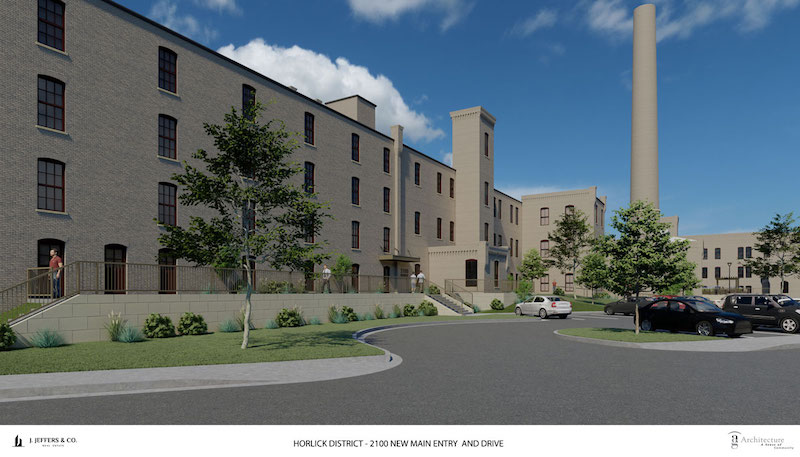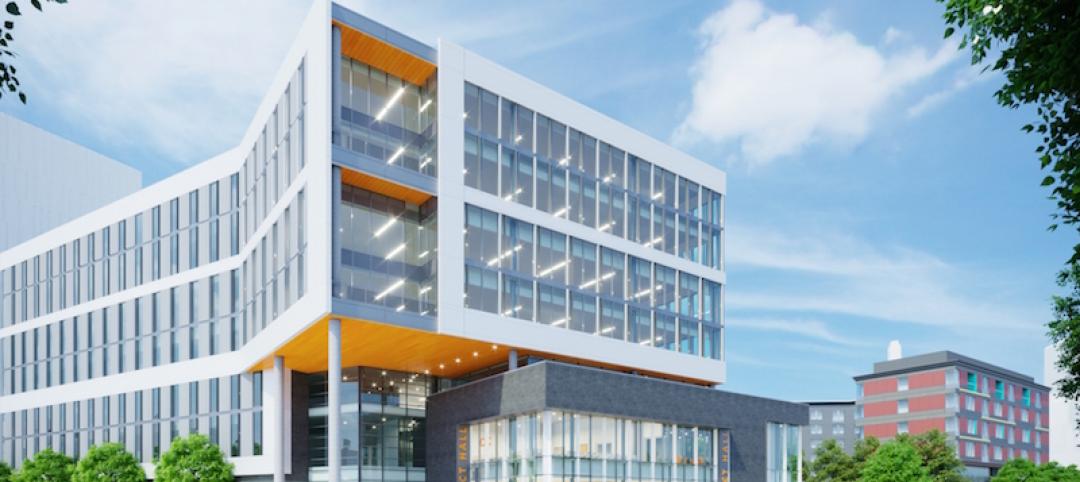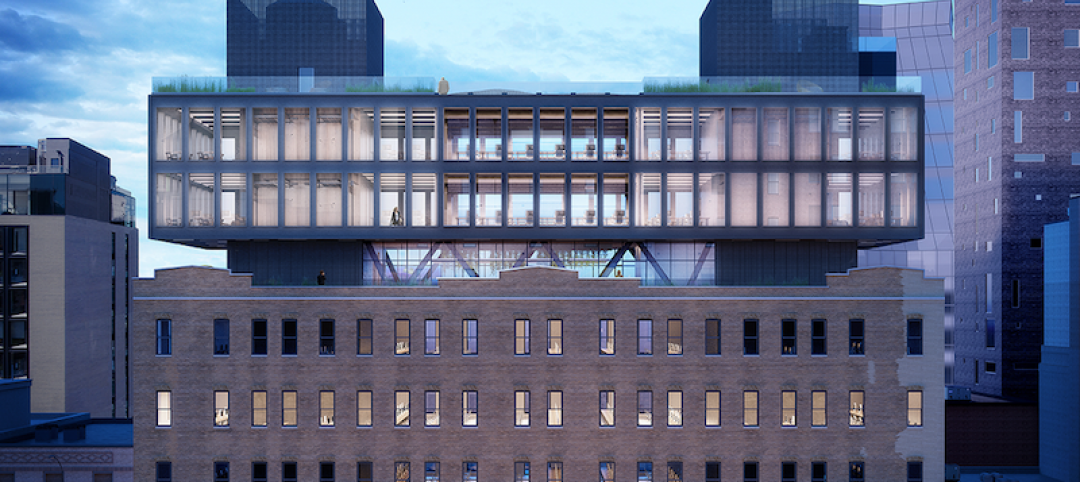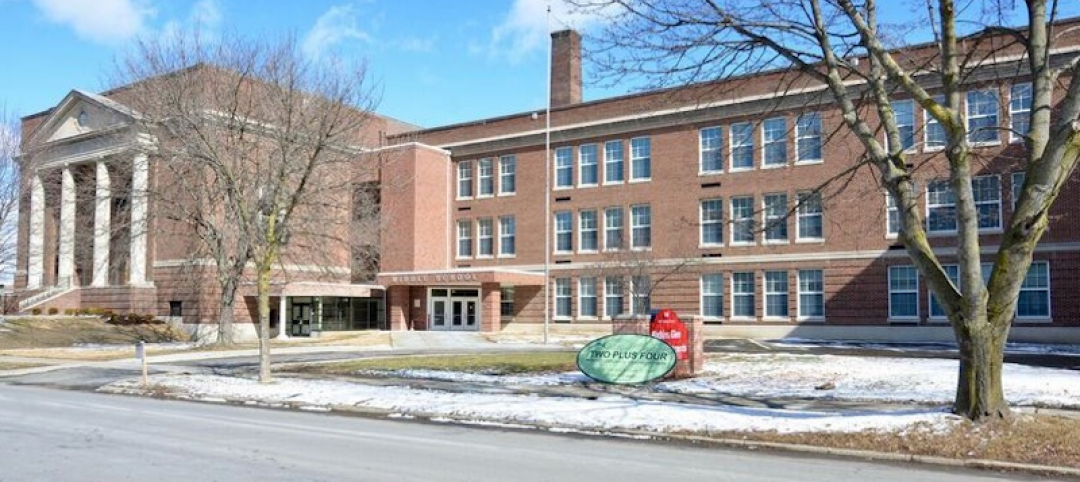Building Teams that include developer J Jeffers & Company and the general contractor CG Schmidt have three adaptive reuse projects underway in Wisconsin that attest to the unique challenges this kind of work presents, especially when historic preservation is a factor.
Scheduled for completion in July is the $40 million Phase 1 reconstruction of the Horlick Malted Milk factory complex in Racine dating back to 1875. This project’s Building Team—which also includes AG Architecture, JSD Engineering, and the historical consultant Heritage Consulting—is converting the northern building for 76 market-rate housing units. That building is being rebranded as Headquarters at Horlick. The southern building, renamed Horlick Flats, will have a mix of 60 market-rate and affordable apartments, managed in partnership with Lutheran Social Services.
Phase 1 will build out the infrastructure of this 13-acre complex, on which J Jeffers owns nine of 14 buildings and has contracts on the rest.
In Milwaukee, J Jeffers and CG Schmidt are working with Eppstein Uhen Architects and structural engineer Spire Engineering to adapt two buildings once home to the Milwaukee Journal Sentinel newspaper. (J Jeffers acquired the downtown block where the Journal Communications buildings sit for an undisclosed price in 2019.)
One conversion is a $27 million reconstruction, scheduled for completion in August, that is reimaging a 115,000-sf building originally completed in 1962 for student housing for Milwaukee Area Technical College (MATC). About one-third of the college’s 30,000 students had incomes last year low enough to qualify for financial aid, and the converted building will set aside 27 studio apartments for students earning less than 60% of the area’s median average. The building will also have two- and four-bedroom units, totaling 217 beds.
The other former Journal building under reconstruction, 256,000 sf and originally completed in 1924, will house 103 apartments. The first floor will contain the main lobby and amenity areas. The building’s original multi-story press room will be converted into an 8,800-sf restaurant and brew pub, and underground parking will be in the lower half of the former press room. The residential mix will consist of studio, one-, two-, and three-bedroom apartments as well as street-accessed walk-ups. This $55.7 million project is scheduled for completion in June 2022.
HISTORY PRESERVED, WHERE POSSIBLE
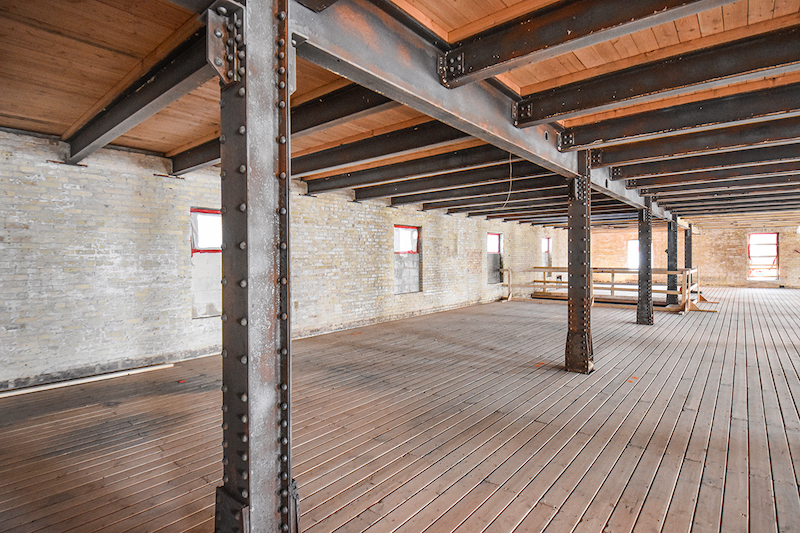
Horlick's tongue-and-groove floors and steel girds are being preserved in this building's reconstruction. Image: J Jeffers & Company
J Jeffers is defraying $100 million of the total cost of these three projects with assistance from federal and state historic tax credits.
Each project has its own set of design and construction criteria. The Horlick factory complex, which is on the National Register of Historical Places, had been abandoned for 45 years, and was so dilapidated the contractors couldn’t even do walkthroughs. While the Building Team razed and removed much of its nonhistorical components, Horlick’s thick exterior masonry walls and structural steel remain. Other architectural elements, such as restored Cream City brick, exposed tongue-and-groove wood flooring, ornate original support columns and steel girders incorporating old school hand-pounded rivets, are being preserved whenever possible.
BRINGING LIGHT TO DARK FLOOR SPACES
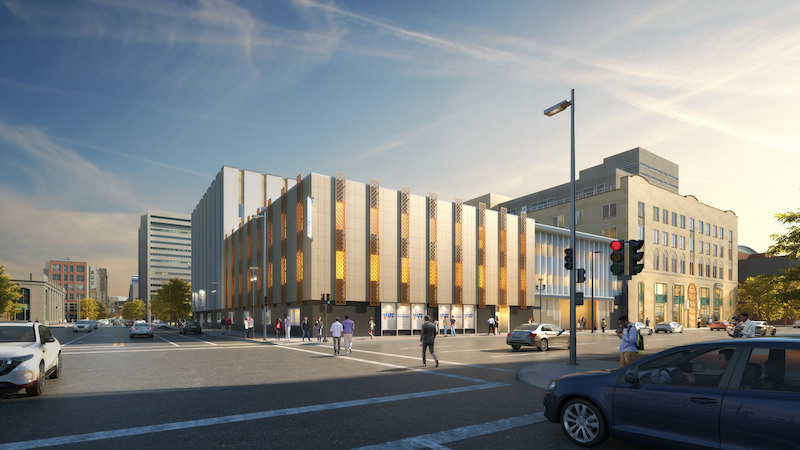
A former Milwaukee Journal-Sentinal building is being converted to student housing for Milwaukee Area Technical College. It will share underground parking with an adjacent Journal-Sentinal buiding that is being converted to residential apartments. Images: Courtesy CG Schmidt
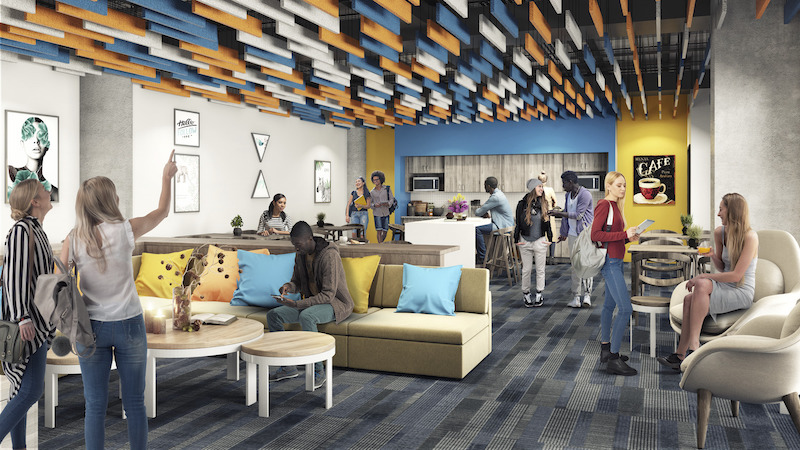 The adaptive reuses in Milwaukee are different stories. Each has floor plates that range from 30,000 to 35,000 sf, which meant that much of the interior space within the buildings had no access to natural light, which is essential to modern residential design. But preservation requirements also protected the buildings’ historic façade.
The adaptive reuses in Milwaukee are different stories. Each has floor plates that range from 30,000 to 35,000 sf, which meant that much of the interior space within the buildings had no access to natural light, which is essential to modern residential design. But preservation requirements also protected the buildings’ historic façade.
To bring light into these spaces, the Building Team created light wells lined with windows in the center of the buildings rather than expanding existing windows or creating new ones.
Each of the Journal buildings includes multi-story, open volume press rooms where newspapers had been printed. Since these rooms are considered part of the buildings’ historic significance, they must be generally preserved while also being repurposed for modern use. Over 160 parking spaces totaling 90,000 sf will be provided in the lower levels of the two adjoining buildings. To achieve this, CG Schmidt and Spire Engineering had to negotiate limited 14-ft clearance within that space to use heavy equipment. Underground concrete parking decks and the new parking garage ramp also required a custom-engineered shoring system to ensure structural integrity.
Additional amenities aimed at enhancing the MATC student-life experience include a computer lab and academic support facilities, as well as one of the hallmarks of the project: converting the cavernous press room area into a regulation-sized basketball court and fitness complex.
Related Stories
Adaptive Reuse | Oct 5, 2017
Wexford’s latest innovation center breaks ground in Providence
The campus is expected to include an Aloft hotel.
Office Buildings | Jun 13, 2017
WeWork takes on a construction management app provider
Fieldlens helps turn jobsites into social networks.
Office Buildings | Mar 27, 2017
New York warehouse to become an office mixing industrial and modern aesthetics
The building is located in West Chelsea between the High Line and West Street.
Adaptive Reuse | Nov 9, 2016
Middle school transformed into affordable housing for seniors
The project received $3.8 million in public financing in exchange for constructing units for residents earning less than 60 percent of the area’s median income.
Adaptive Reuse | Nov 7, 2016
From fuel to food: adaptive reuse converts a closed gas station in Princeton, N.J., to a Nomad pizza
The original building dates back to the Modernist 1930s.
Hotel Facilities | Sep 7, 2016
Fish out of water: The site of a Birdseye frozen-food factory in Gloucester, Mass., transforms into a seaside hotel
The construction of this 94-room hotel and conference center pitted tourism proponents against locals who want to preserve this historic city’s fishing heritage.
Healthcare Facilities | Apr 24, 2016
A symposium in New Jersey examines how a consolidating healthcare industry can better manage its excess real estate
As service providers position themselves closer to their communities, they are looking for ways to redirect non-core buildings and land for other purposes.
Adaptive Reuse | Apr 7, 2016
Redevelopment plan announced for Chicago’s historic Cook County Hospital
The century-old, Beaux Arts architecture-inspired hospital will transform into a mixed-use development.


